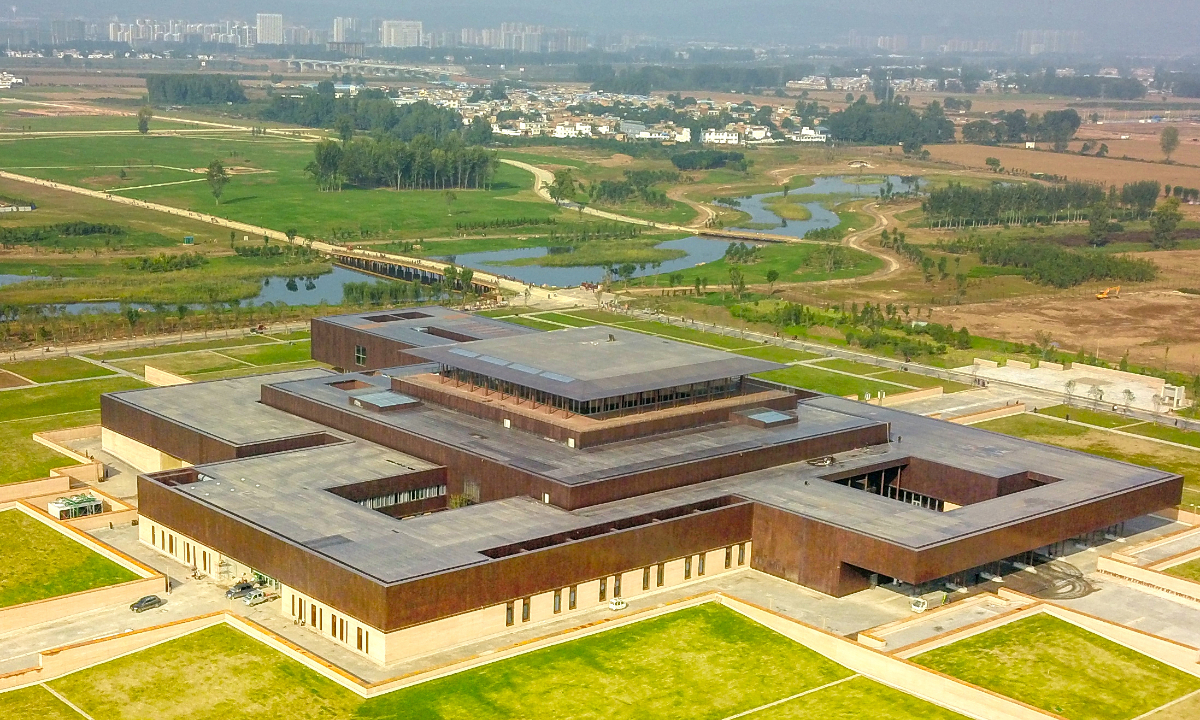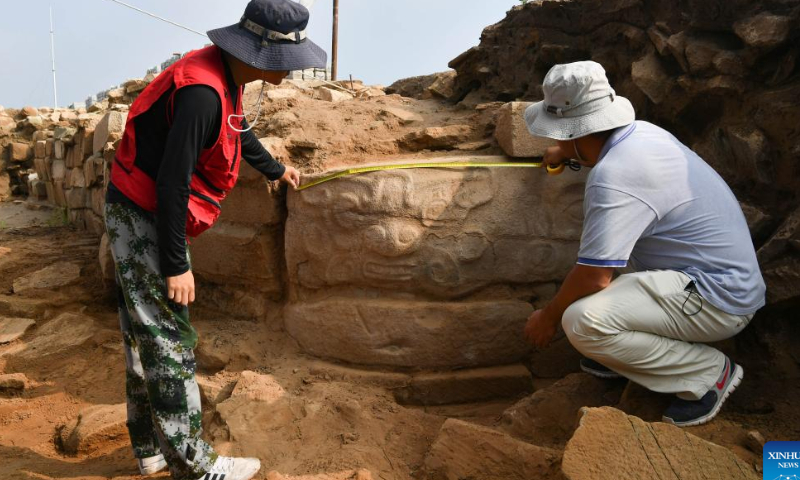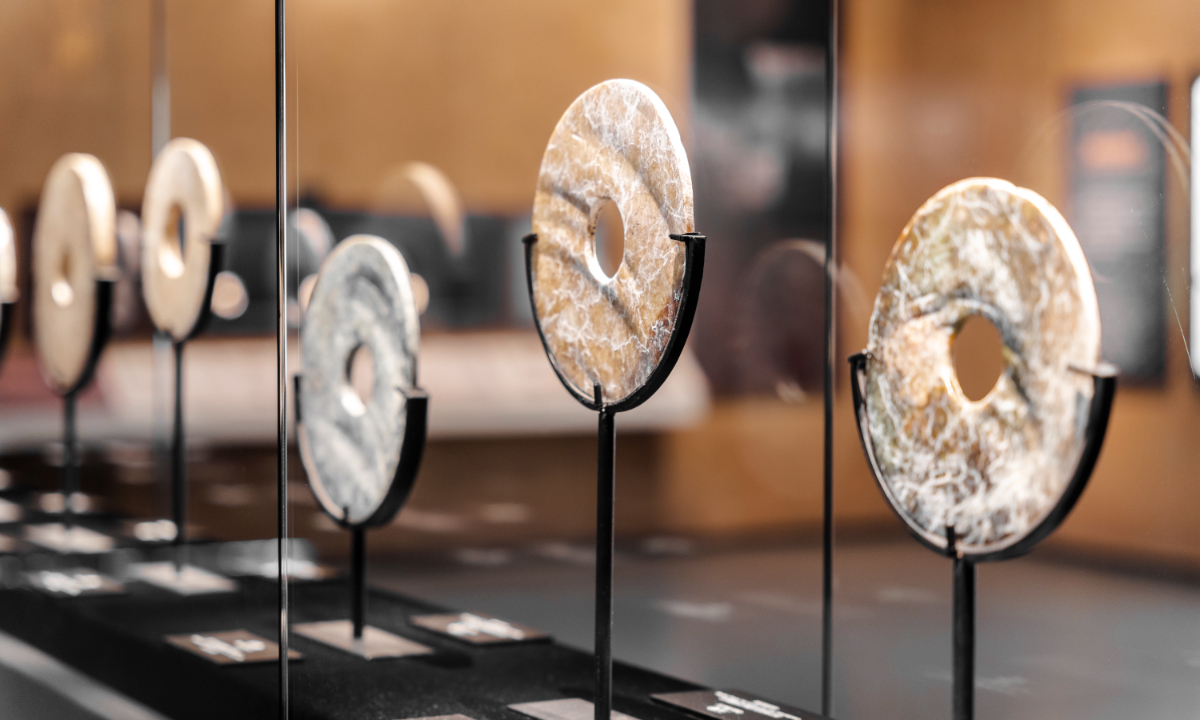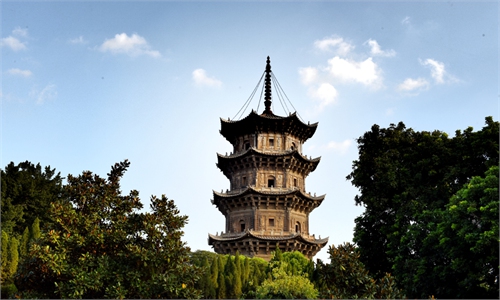ARTS / ART
Major finds, insights from China’s mega project delving into origins of its civilization
Editor's Note:
As we are about to bid farewell to the year 2022, a year where we lived through happiness, accomplishments and joy although life was accompanied by a pandemic, the Global Times staff of life and culture will share our observations on the cultural life of the whole year to offer a platform to remember what the country has accomplished in the cultural sector and the cultural life that we, the ordinary people, have enjoyed, and to help everyone get ready to embrace the New Year with hope and strength.

Who are we? Where did we come from? Where are we going? These are ancient philosophical questions that trouble everyone and every nation in the world.
We, the people of China, are proud of the fact that Chinese civilization is one of the world's four great ancient civilizations. With a history over 5,000 years, it is the only one that has developed in an unbroken chain up to the present day.
But for contemporary Chinese people, there are some issues of concern when it comes to the origins of Chinese civilization. How did Chinese civilization first emerge, take shape, and develop? How has Chinese civilization contributed to world civilizations?
These questions are being answered thanks to a national-level project to trace the origins of Chinese civilization.
Setting the standard
Chinese President Xi Jinping stressed at the 39th group study session of the Political Bureau of the Communist Party of China Central Committee in May that the project to trace the origins of Chinese civilization has provided clear knowledge of the origins and formation of Chinese civilization, the history of its development, the process of the formation and development of its pluralistic and integrated culture and why it formed in such a way.
After talking with Wang Wei, the chief expert of the project and president of the Chinese Society of Archaeology, the Global Times reporters felt proud that China's 5,000-plus-year history is not a fairy tale but a true history that has been proven through this project.
Over the past 20 years, China's fruitful archaeological discoveries, supported by interdisciplinary research from fields such as physics, chemistry and biology, as well as advanced technology, have provided solid evidence for tracing the origins of this ancient civilization.
Before digging into this huge topic, how to define a "civilized society" was a major priority.
Based on Chinese materials while taking into account the features of other ancient civilizations, Chinese scholars represented by Wang proposed a standard involving three phases: developed production, increased population and the establishment of cities; intensified division of labor and social divisions leading to the appearance of classes; strengthened central power resulting in the formation of a monarchy and state.

Under the framework of this standard, some significant archaeological discoveries such as the Archaeological Ruins of Liangzhu City, the large-scale Taosi Site in North China's Shanxi Province and the Shimao Site in Northwest China's Shaanxi Province have provided many crucial clues to decode China's urban development as well as the formation of complicated societies.
Major discoveries
The Liangzhu City site in Hangzhou, East China's Zhejiang Province, the largest prehistoric city site in China, for example, is comprised of an inner city built about 5,000 years ago, an outer city, and a more than 10-kilometer-long water system aimed at preventing floods. These discoveries reveal that classes, a kingship and a state had emerged in Liangzhu at that time, meeting the requirements for a civilized society.

In 2019, the Archaeological Ruins of Liangzhu City were inscribed as a UNESCO World Heritage Site.
"The reason for the inclusion is that it shows a regional early state based on developed rice farming, with obvious social differentiation and a unified belief system. This marks that China's 5,000-year history of civilization has been recognized by the world," Wang told the Global Times.
Around 4,000 years ago, the Xia Dynasty (c.2070-c.1600 BC) was established. Archaeological discoveries at the Erlitou Site in Central China's Henan Province show that this site was probably the capital of the Xia Dynasty, the first central dynasty recorded in Chinese history. The site shows that Chinese civilization had entered a new stage centered around the Central Plains region.
Since then, Chinese civilization gradually formed a shared community based on various roots that had frequently exchanged with each other.
For example, the cultivation of wheat, breeding of cattle and metallurgy, which originated in West Asia, were introduced into the Central Plains more than 4,500 years ago. China then developed its own brilliant ceremonial bronze ware civilization. Meanwhile, China also contributed some key products, such as millet, to the rest of the world.
As we are about to bid farewell to the year 2022, a year where we lived through happiness, accomplishments and joy although life was accompanied by a pandemic, the Global Times staff of life and culture will share our observations on the cultural life of the whole year to offer a platform to remember what the country has accomplished in the cultural sector and the cultural life that we, the ordinary people, have enjoyed, and to help everyone get ready to embrace the New Year with hope and strength.

The Erlitou Site Museum of the Xia Capital Photo: VCG
Who are we? Where did we come from? Where are we going? These are ancient philosophical questions that trouble everyone and every nation in the world.
We, the people of China, are proud of the fact that Chinese civilization is one of the world's four great ancient civilizations. With a history over 5,000 years, it is the only one that has developed in an unbroken chain up to the present day.
But for contemporary Chinese people, there are some issues of concern when it comes to the origins of Chinese civilization. How did Chinese civilization first emerge, take shape, and develop? How has Chinese civilization contributed to world civilizations?
These questions are being answered thanks to a national-level project to trace the origins of Chinese civilization.
Setting the standard
Chinese President Xi Jinping stressed at the 39th group study session of the Political Bureau of the Communist Party of China Central Committee in May that the project to trace the origins of Chinese civilization has provided clear knowledge of the origins and formation of Chinese civilization, the history of its development, the process of the formation and development of its pluralistic and integrated culture and why it formed in such a way.
After talking with Wang Wei, the chief expert of the project and president of the Chinese Society of Archaeology, the Global Times reporters felt proud that China's 5,000-plus-year history is not a fairy tale but a true history that has been proven through this project.
Over the past 20 years, China's fruitful archaeological discoveries, supported by interdisciplinary research from fields such as physics, chemistry and biology, as well as advanced technology, have provided solid evidence for tracing the origins of this ancient civilization.
Before digging into this huge topic, how to define a "civilized society" was a major priority.
Based on Chinese materials while taking into account the features of other ancient civilizations, Chinese scholars represented by Wang proposed a standard involving three phases: developed production, increased population and the establishment of cities; intensified division of labor and social divisions leading to the appearance of classes; strengthened central power resulting in the formation of a monarchy and state.

Archeologists measure a recently-excavated stone carvings at the Shimao ruins, an important prehistoric site in Shenmu City, northwest China's Shaanxi Province, Aug. 6, 2022. Photo: Xinhua
Under the framework of this standard, some significant archaeological discoveries such as the Archaeological Ruins of Liangzhu City, the large-scale Taosi Site in North China's Shanxi Province and the Shimao Site in Northwest China's Shaanxi Province have provided many crucial clues to decode China's urban development as well as the formation of complicated societies.
Major discoveries
The Liangzhu City site in Hangzhou, East China's Zhejiang Province, the largest prehistoric city site in China, for example, is comprised of an inner city built about 5,000 years ago, an outer city, and a more than 10-kilometer-long water system aimed at preventing floods. These discoveries reveal that classes, a kingship and a state had emerged in Liangzhu at that time, meeting the requirements for a civilized society.

Jade wares unearthed at the Liangzhu City site in Zhejiang Province Photo: VCG
In 2019, the Archaeological Ruins of Liangzhu City were inscribed as a UNESCO World Heritage Site.
"The reason for the inclusion is that it shows a regional early state based on developed rice farming, with obvious social differentiation and a unified belief system. This marks that China's 5,000-year history of civilization has been recognized by the world," Wang told the Global Times.
Around 4,000 years ago, the Xia Dynasty (c.2070-c.1600 BC) was established. Archaeological discoveries at the Erlitou Site in Central China's Henan Province show that this site was probably the capital of the Xia Dynasty, the first central dynasty recorded in Chinese history. The site shows that Chinese civilization had entered a new stage centered around the Central Plains region.
Since then, Chinese civilization gradually formed a shared community based on various roots that had frequently exchanged with each other.
For example, the cultivation of wheat, breeding of cattle and metallurgy, which originated in West Asia, were introduced into the Central Plains more than 4,500 years ago. China then developed its own brilliant ceremonial bronze ware civilization. Meanwhile, China also contributed some key products, such as millet, to the rest of the world.



